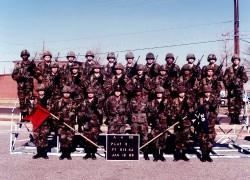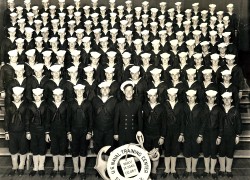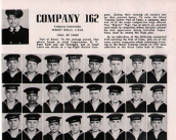Specialty Summary. Provides command and control (C2) capabilities through installation, maintenance, fault isolation, and reconstitution of fixed cable and wireless distribution systems, local area networks (LAN), and wide area networks (WAN) in support of tactical and strategic operations. Monitors and analyzes performance of underground, buried, and aerial cable and antenna networks.
Duties and Responsibilities:
Installs, maintains, reconstitutes, removes, and modifies copper core, coaxial, waveguide, and fiber optic cable and antenna systems. Climbs antenna support structures and wooden poles to various heights for maintenance and installation actions on cable and antenna systems. Installs and maintains dedicated local area network (LAN) and wide area network (WAN) media distribution systems, including distribution system interior wiring. Uses drawings, task lists, instructions, and technical data to work on copper core, coaxial, waveguide, fiber optic cable and antenna systems. Installs distribution equipment. Terminates copper core and fiber optic cables on main distribution frames and interface equipment. Operates and performs maintenance on tools, test equipment, auxiliary equipment, and vehicles such as backhoes, trenchers, cable trailers, cable reel trucks, and antenna construction vehicles.
Locates, repairs, and replaces faulty closures in copper core, waveguide, coaxial, and fiber optic cable systems. Performs pneumatic troubleshooting to locate faulty splice closures and demivalve assemblies. Excavates and backfills splice pits. Seals cables, repairs demivalves, and adjusts pressure transmitters and contactors. Installs and maintains aerial cable support structures such as pole line and suspension strands. Installs underground cable, uses duct rods, cleans cable duct systems, prepares pulling apparatus, and pulls in and temporaDeploys, sustains, troubleshoots and repairs standard radio frequency wireless, line-of-sight, beyond line-of-sight, wideband, and ground-based satellite and encryption transmission devices in a fixed and deployed environment. rily bonds cable. Installs, maintains, and marks path of buried cable systems.
Monitors, analyzes, and troubleshoots copper core, waveguide, coaxial, and fiber optic cable systems. Determines cause of signal deterioration in cable carrying audio, video, digital, and data transmission. Troubleshoots, repairs, and replaces T-carrier equipment, fiber optic modems, and components. Interprets compressor meter readings and adjusts controls. Installs, maintains, and repairs or replaces damaged pneumatic and electrical components in cable air dryers. Uses test equipment to identify copper conductors and optic fibers in cables. Locates and traces buried cable. Locates and traces leaks in pressurized cable system. Performs operational checks and preventive maintenance inspections.
Maintains communications and computer systems installation records (CSIRs), maintenance and inspection cable records, and technical orders.
Supervises, plans, organizes, and directs cable and antenna installation and maintenance activities. Develops and improves work methods and procedures related to installation and maintenance of all cable and antenna systems.
Manages, supervises, and performs planning and implementation activities. Manages implementation and project installation and ensures architecture, configuration, and integration conformity. Develops, plans, and integrates base communications systems. Serves as advisor at meetings for facility design, military construction programs and minor construction planning. Evaluates base comprehensive plan and civil engineering projects. Monitors status of base civil engineer work requests. Performs mission review with customers. Controls, manages, and monitors project milestones and funding from inception to completion. Determines adequacy and correctness of project packages and amendments. Monitors project status and completion actions. Manages and maintains system installation records, files, and indexes. Evaluates contracts, wartime, support, contingency and exercise plans to determine impact on manpower, equipment, and systems.
Specialty Qualifications:
Knowledge. Knowledge is mandatory of: installation and maintenance management functions; wire transmission principles; electrical and light wave communications on aerial, buried and underground cable systems; cable pressure and alarm systems; antenna and obstruction systems; antenna fundamentals, including antenna theory and principles of rotators, amplifiers and control cables; antenna installation procedures, including radio frequency cable, waveguide splicing, and repair and maintenance techniques of radomes; operation and theory of cable pressurization, alarm systems, locating cable faults, identifying causes of deterioration in cable systems, cable testing procedures and methods of sealing cables; safety precautions related to oxygen deficiency, oxygen enrichment, toxic and explosive gases, working aloft, rescue procedures for aerial and underground environments, basic first aid and cardiopulmonary resuscitation; use and limitations of test set operations; corrosion prevention and control procedures; and capabilities, limitations, operations and functional use of basic cable and antenna systems and associated hardware.
Education. For entry into this specialty, completion of high school is mandatory. Additional courses in mathematics, computer science or information technologies are desirable.
Training. For award of AFSC 3D137, completion of Cable and Antenna Systems initial skills course is mandatory.
Experience. The following experience is mandatory for the award of the AFSC indicated:
3D157. Qualification in and possession of AFSC 3D137. Also, experience in functions such as installing, maintaining and repairing communications cable and antenna systems, including electrical equipment and transmission lines.
3D177. Qualification in and possession of AFSC 3D157. Also, experience performing or supervising functions in areas such as project installation and maintenance actions, communications cables and antennas, and related electrical hardware.
Other. The following are mandatory as indicated: For entry into this specialty: Normal color vision as defined in AFI 48-123, Medical Examinations Standards. Qualification to operate government vehicles according to AFMAN 24-309, Vehicle Operations. For entry, award and retention of these AFSCs: Normal depth perception and normal gait and balance as defined in AFI 48-123. Physical ability to perform climbing duties and freedom from fear of heights and claustrophobia.




